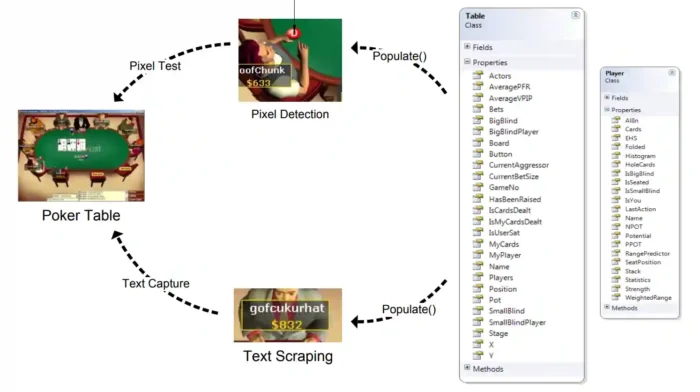In 2014, The University of Alberta researchers used their CFR+ algorithm to effectively solve this poker variant, which is no small feat. They examined 3.19×10^14 decision points! It’s like attempting to count all of the stars in a galaxy, except instead of stars, you have intricate poker hands and betting tactics.
Imagine you’re playing a game of poker against yourself, but instead of for pleasure, you’re trying to become the best poker player you can be. That is precisely what the CFR+ (Counterfactual Regret Minimization Plus) algorithm accomplishes. It starts out with no idea how to play and makes random moves. After each game, it reflects on its decisions and wonders, “If I had done this instead of that, would I have done better?” It then alters its strategy to favor the better moves more frequently.
Think of it as learning to ride a bike by repeatedly falling off. Each time you fall, you learn what not to do next time. CFR+ performs this over billions of poker games, fine-tuning its strategy to reduce its “regret” – the difference between what it did and what the ideal option would have been. It gradually approaches a perfect plan that no opponent can beat, just as you finally stop falling off your bike and begin riding smoothly. CFR+ achieves a Nash equilibrium by averaging its methods throughout all of these games, resulting in a super-smart approach that cannot lose in the long term, even against the most difficult opponents.
But what truly tickles me is the thought that this approach validates certain long-held poker wisdom while refuting others. For example, the algorithm nearly never ‘limps’ (calls the first stake), something many experienced players would sagely acknowledge. However, it also demonstrates that it is occasionally preferable to cap the betting (raise the final amount) with a pair of twos rather than aces. Imagine a seasoned poker player reading this and exclaiming, “No way!” at the screen.
This study does more than merely solve a game; it also provides insight into human decision-making and strategy. The repercussions extend well beyond the poker table. These algorithms can be used in fields such as security and medical decision-making, where uncertainty and strategy are critical. Who knew that talents gained over late-night poker sessions could be applied to something as important as airport security protocols?
Turing once defended his work on gaming algorithms, claiming that it was all for fun. This study exemplifies that spirit. Solving poker was more than just a scientific achievement; it was a fascinating intellectual challenge. If only we could all get professions that allowed us to play games all day in the name of science!
Finally, it is obvious that, while humans have been playing poker for centuries, we are just now beginning to appreciate the complexities of the strategy involved. And who knows. Perhaps the next breakthrough will come from examining another game, such as Monopoly, where we can finally figure out the ideal approach, allowing family game nights to finish in peace rather than board-flipping frustration…



